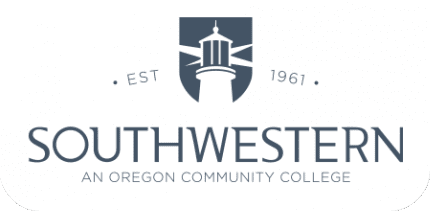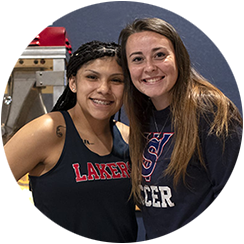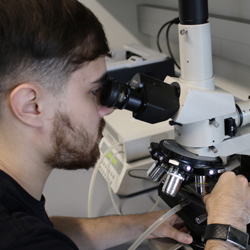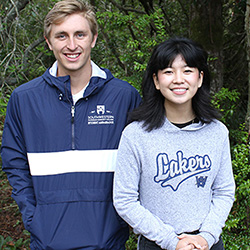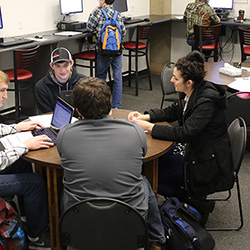Dear Campus Community,
Southwestern is Oregon’s most remote community college. Most of us may not think about the implications of that. For people who want to go to college, we are the only local option.
To learn elsewhere, residents of the college district must travel over a mountain range or go online. Often, it is more expensive. Many students want the “people connection”, and 50% of our students who enroll in CTE programs need access to labs and equipment, usually requiring time on either campus.
Yesterday, I and seven other community college presidents testified before a legislative higher education committee. One after another, we talked about our students, the challenges they face and the groundbreaking work community colleges do. We did not talk about community college funding, but it was the unspoken topic in the room as the Legislature works on the state’s budget. Here is the link if you want to watch it. https://olis.oregonlegislature.gov/liz/mediaplayer/?clientID=4879615486&eventID=2023031097
Oregon funds 38% of our budget through reimbursement on a three-year lookback of FTE enrollment. Local property taxes provide 32% of the college’s revenue. Tuition and fees cover 27%. The other 3% is miscellaneous funding.
When the governor and lawmakers let community college funding stagnate, our costs still go up. Property tax increases are capped at 3% annually, so in times of high inflation colleges are left with few options to balance revenue with escalating expenses. The options then become increasing tuition and fees, and cutting expenses. We can’t raise tuition and fees enough to make up for what we need.
Budgeting at the end of a biennium is an analytical guessing game. As the college works on the budget now through April, it’s unlikely the state will finish its work until June. We don’t know at what level the state will fund colleges. We do know, though, the next two years of funding probably will not cover projected costs for current operations.
Changing Demographics
In this region, the population is shifting rapidly. There are fewer younger people and many more retirees. Enrollment at Oregon’s colleges is projected to decrease through 2029. Rural colleges are hardest-hit. Yet, colleges are expected to provide more services to help students persist, overcome and complete.
If you have taken an economics class, you know there is a point as enrollment decreases, it becomes more expensive per student to operate. Every day we work on the operational challenges of maintaining buildings and grounds. We try to hire and inspire staff in a competitive, worker-shortage era.
Yesterday in the legislative hearing, I put my budget worries aside and focused on the work we do that inspires. I talked with lawmakers about how Southwestern has transformed developmental education and become a leader in the state for student success.
When I started here at SWOCC 30 years ago as a faculty member, a student might have taken 37 credits of developmental reading, writing and math before ever taking a class on their pathway to a degree or career. Most students gave up. National data shows that only 23% completed degrees or certificates if they start in a developmental class for credit.
In the early 2000s, we set out to change that. Southwestern became a pioneer in the Guided Pathways movement. We joined with Achieving the Dream in 2012. This led us down a path to improve developmental reading, writing and math curriculum. Today, the college is a leader in student completion.
Achievement
Students on our campuses at that time took a placement test where 50% needed basic help in reading and writing. 80% of our students needed a developmental math refresh. Not sure how those statistics have changed over the years. What has changed is how the college teaches those students.
Starting in 2011, we began conversations with faculty to improve the pathway to completion. We began by re-engineering classes and linking students with the math they need based on their pathways in STEM or non-STEM. We eliminated many developmental classes by improving curriculum or creating “co-requisite” classes.
After 12 years, our data shows success. Southwestern’s students reach their degrees 1 year sooner than all the other students at Oregon’s other community colleges. The four-year completion transfer rate is 65%, which 14% points higher than the other community colleges. Eleven percent of our students are LatinX. Their completion success at 67% is higher than any other group at this college, and 21 percentage points higher than any other college in Oregon. These are amazing outcomes and it has gotten the attention of lawmakers and others around the state.
Every time I drive home after spending time with the other college presidents, I am so happy to be at SWOCC. We have an awesome college with awesome faculty and staff. I am so proud to be your leader. Sure, we have some challenges to sort through so let’s remember that we are a team of people who might have some different opinions on how we move forward to reach our strategic priorities. But let’s try to be mindful that it takes all of us to work together to improve student success.
Have a great weekend,
Patty
Patricia M. Scott, Ed.D.
President
Southwestern Oregon Community College
